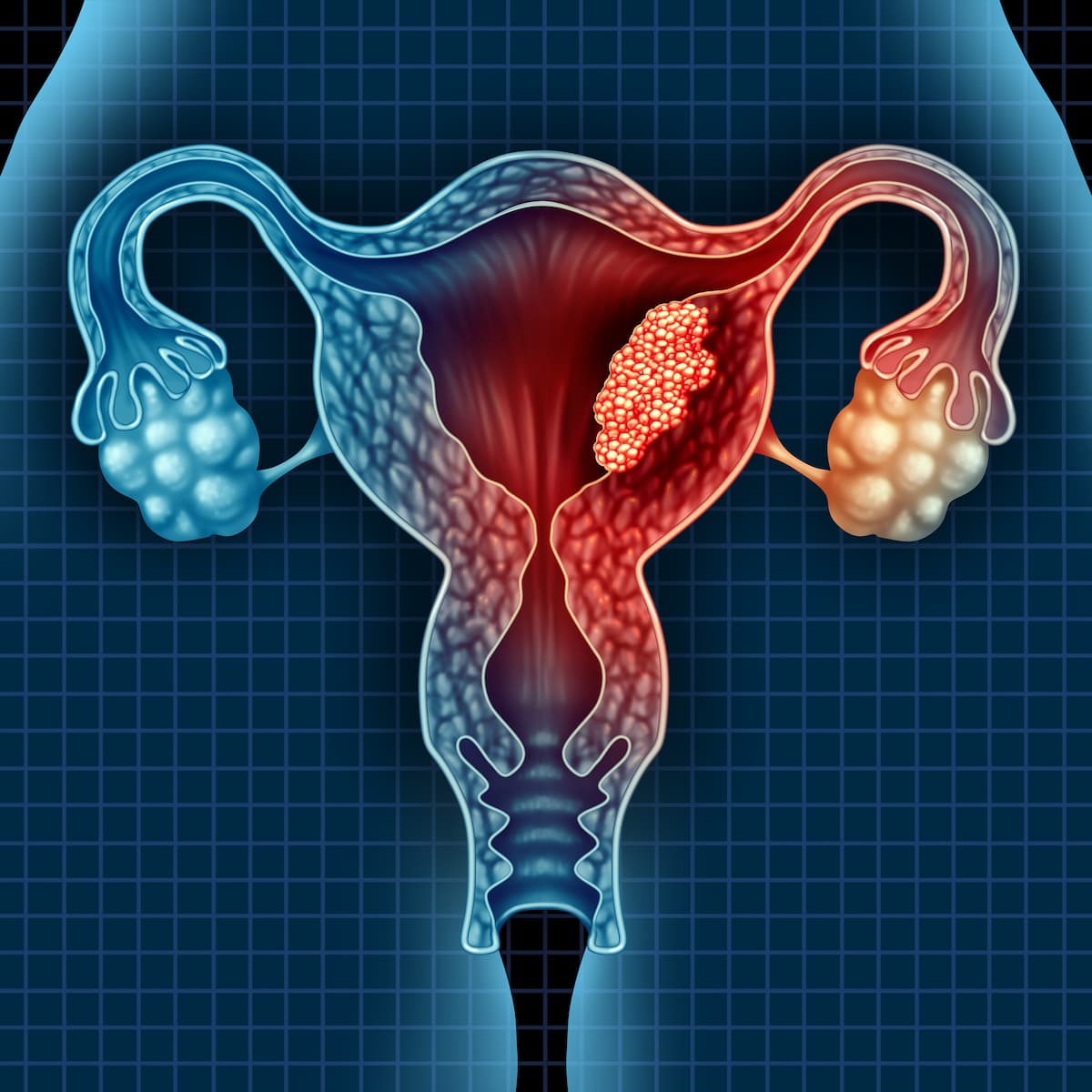Rina-S Earns FDA Breakthrough Therapy Designation in Endometrial Cancer
Data from the phase 1/2 RAINFOL-01 trial support the agency’s regulatory decision on rinatabart sesutecan in advanced endometrial cancer.
Supporting findings for the designation came from the phase 1/2 RAINFOL™-01 trial (NCT05579366) assessing the efficacy and safety of Rina-S among patients with various solid tumors.

The FDA has granted breakthrough therapy designation to rinatabart sesutecan (Rina-S®) as a treatment for adults with progressive or recurrent endometrial cancer who experienced disease progression on or after prior therapy with a platinum-containing agent and a PD-L1 inhibitor, according to a press release from the developer, Genmab.1
As an investigational antibody drug conjugate, Rina-S contains a human monoclonal antibody that targets folate receptor α (FRα). Developers also engineered the agent to possess a hydrophilic protease-cleavable linker as well as a topoisomerase I inhibitor payload in exatecan.
“This breakthrough therapy designation underscores the future potential of Rina-S as a treatment option for women diagnosed with advanced endometrial cancer, who [have] a poor prognosis after progressing on standard of care treatment,” Judith Klimovsky, MD, executive vice president and chief development officer at Genmab, stated in the press release.1 “Rina-S reinforces Genmab’s determination to advance wholly owned antibody medicines in areas long overdue for innovation and our commitment to driving a strong clinical development program to help redefine what’s possible to treat gynecologic cancers.”
Supporting findings for the designation came from the phase 1/2 RAINFOL™-01 trial (NCT05579366) assessing the efficacy and safety of Rina-S among patients with various solid tumors. Investigators previously highlighted data from cohort B2, which included 64 patients with heavily pretreated advanced or recurrent endometrial cancer, at the 2025 American Society of Clinical Oncology (ASCO) Annual Meeting.2
The confirmed objective response rate (ORR) was 50.0% among patients who received Rina-S at 100 mg/m2 (n = 22) compared with 47.1% in those who received the agent at 120 mg/m2 (n = 42). In each cohort, the median duration of response (DOR) was not reached after a median follow-up of 7.7 months and 9.8 months, respectively.
Safety data showed that the most common treatment-emergent adverse effects (TEAEs) of any grade included diarrhea, dyspnea, urinary tract infections, headaches, constipation, diminished appetite, vomiting, fatigue, and nausea. Serious AEs of grade 3 or higher affected 31.8% and 50.0% of patients who received Rina-S at 100 mg/m2 and 120 mg/m2, respectively. Hematologic toxicities appeared to be manageable, and investigators reported low rates of treatment discontinuation. There were no signs of ocular toxicities, neuropathy, or interstitial lung disease in the trial.
“Advanced stage and recurrent endometrial cancer often lead to resistance to standard-of-care options. When this occurs, prognosis worsens and treatment options become increasingly limited, leaving patients and clinicians to navigate difficult decisions,” study investigator Ira Winer, MD, PhD, FACOG, a professor in the Division of Gynecologic Oncology and Phase I Developmental Therapeutics at the Karmanos Cancer Institute of Wayne State University, said in a press release on these data.2 “These phase 1/2 results demonstrate encouraging data with Rina-S in this patient population and support its further development as a potential therapy for patients with advanced and recurrent endometrial cancer.”
The open-label, multi-center RAINFOL-01 trial consisted of various stages, which included a dose-escalation portion in part A, tumor-specific dose-expansion portions in part B, a platinum-resistant ovarian cancer portion in part C, combination therapy cohorts in part D, an endometrial cancer monotherapy cohort in part F, and a high-grade ovarian cancer monotherapy cohort in part K. The trial’s primary end point in part F was ORR per blinded independent central review using RECIST v1.1 criteria.3 Secondary end points in this portion of the trial included progression-free survival, overall survival, and DOR.
Investigators will also evaluate Rina-S vs their choice of paclitaxel, topotecan, pegylated liposomal doxorubicin, or gemcitabine among patients with platinum-resistant ovarian cancer as part of the phase 3 RAINFOL-02 trial (NCT06619236).4
References
- Genmab receives FDA breakthrough therapy designation for Rinatabart Sesutecan (Rina-S®) in advanced endometrial cancer (EC). News release. Genmab A/S. August 26, 2025. Accessed August 26, 2025. https://tinyurl.com/5n7znxcz
- Genmab announces investigational Rinatabart Sesutecan (Rina-S®) demonstrates encouraging anti-tumor activity in heavily pretreated patients with advanced endometrial cancer in phase 1/2 RAINFOL™-01 trial. News release. Genmab A/S. June 2, 2025. Accessed August 26, 2025. https://tinyurl.com/4xbsw8k2
- Rinatabart Sesutecan (Rina-S, PRO1184, GEN1184) for advanced solid tumors (GCT1184-01/ PRO1184-001) (RAINFOL-01). ClinicalTrials.gov. Updated August 20, 2025. Accessed August 26, 2025. https://tinyurl.com/2hhmdjpe
- Study to assess the efficacy of Rina-S compared to treatment of investigator's choice in participants with platinum resistant ovarian cancer (RAINFOL-02).